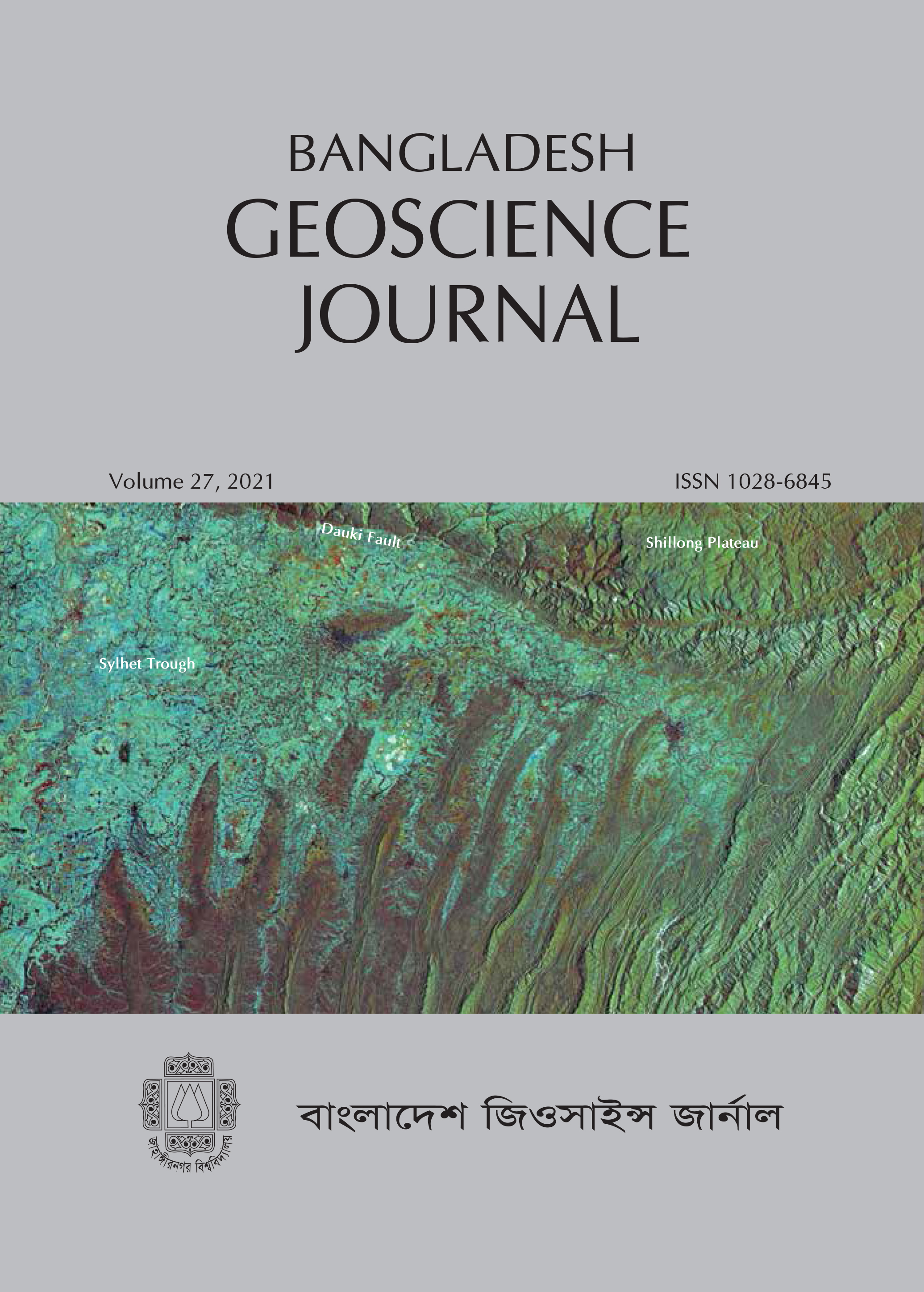Understanding the long term water level and flow characteristics of the Old Brahmaputra River, northeastern Bangladesh
Main Article Content
Abstract
In this study, the water level characteristics of the Old Brahmaputra River are assessed using long-term water level data from Jamalpur and Mymensingh stations. The discharge data is only available for the downstream Mymensingh station. The analysis indicates that both the stations show considerable changes of annual water level, which is lowest in the month of March and highest in July. Interestingly when the upstream and downstream water levels are compared, it is found that the downstream Mymensingh station shows lower water level compared to the upstream Jamalpur station. Generally, downstream stations show higher water level than the upstream area due to augmented base flow, runoff from the floodplain and contribution from the tributaries. However, within 69 km distance between the stations, the downstream water level height is reduced to about 5.2 meter. Such huge reduction of water level within short distance probably indicates large-scale abstraction of river water for irrigation purpose, which requires further investigations. The long-term chronological trend of the water level indicates declining tendency for both the stations, which is about -0.038 meter per year for Jamalpur station and -0.081 meter per year for the downstream Mymensingh station. Due to the recent declining trend, the water level for both the stations do not intersects the danger water level, however there were several such events occurred in the past. The long-term trend of the individual months of the year also show declining tendency, which is especially significant for the monsoon months. The reduction of monsoon months water level probably suggests serious obstruction in the off-take area. The long-term yearly discharge indicates significant contrast between the dry and wet season, which is about 20 times in magnitude. Comparisons of discharge between 1970 and 2019 indicate that there is slight increase in dry season flow but dramatic decrease of discharge in the wet months during the 49 years. Comparison of water level and discharge indicates that, although the wet season discharge (620 cumec) is more than 20 times than the dry season (26 cumec), the water level variations between wet and dry season is not much. Therefore, it seems that the river receives considerable base-flow to maintain the water level during the dry season periods.

